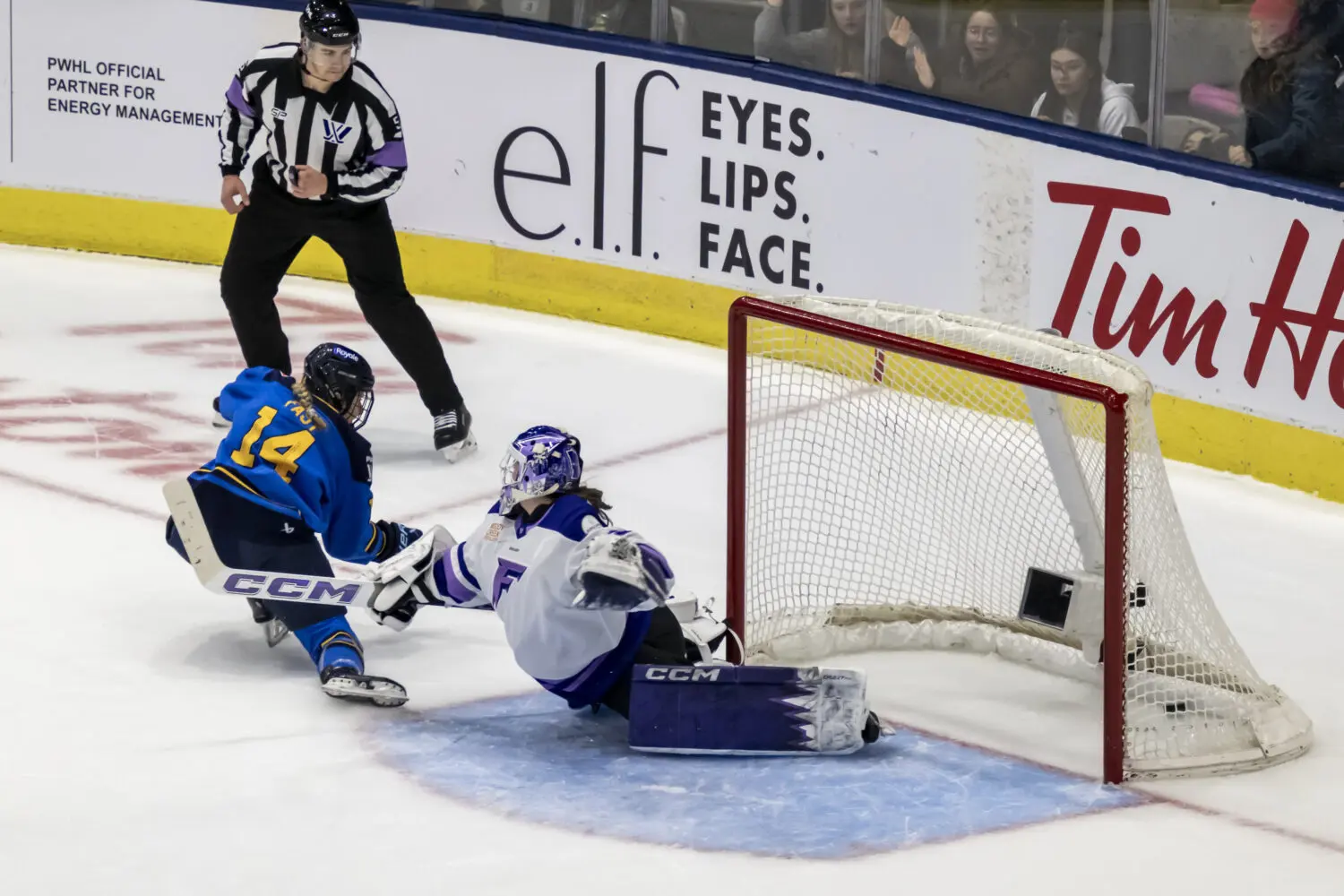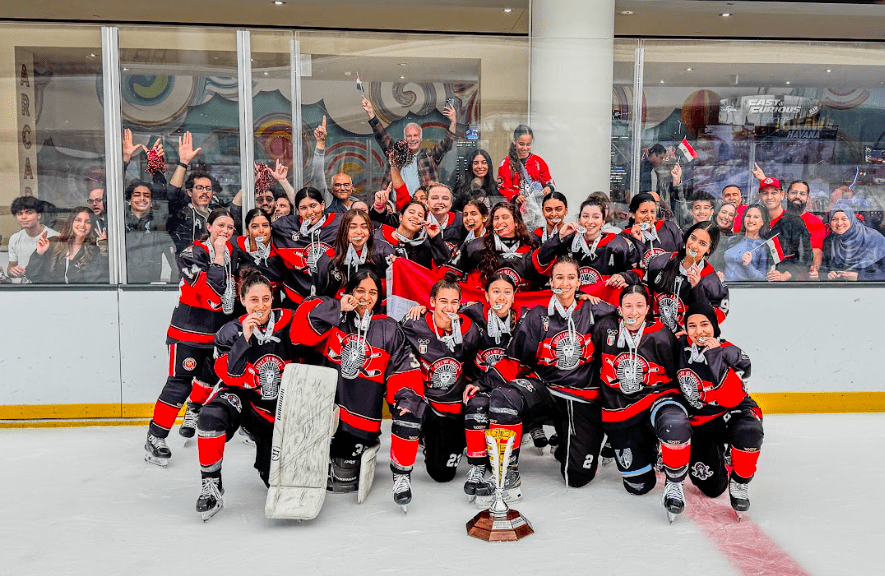 Although its announcement was unexpected, the arrival of the National Women’s Hockey League is a most welcome one among the remarkable women of hockey. Conceived by former Northeastern Huskies competitor Dani Rylan (with consultation from hockey legend Angela Ruggiero), the long-term potential is one that is very exciting, injecting an energy into the game that may define it for the remainder of the decade.
Although its announcement was unexpected, the arrival of the National Women’s Hockey League is a most welcome one among the remarkable women of hockey. Conceived by former Northeastern Huskies competitor Dani Rylan (with consultation from hockey legend Angela Ruggiero), the long-term potential is one that is very exciting, injecting an energy into the game that may define it for the remainder of the decade.
From the outset, the declaration of player compensation has already stimulated an encouraging response, ensuring that the new league will have a superlative talent pool to select from. For the franchises based in Boston, Buffalo, Connecticut and New York, it ensures that all can build with a solid foundation.
Of all the names that have been given (Pride for Boston, Beauts for Buffalo, Riveters for New York), the feel-good story certainly belongs to Connecticut. Dubbed the Whale, it not only pays homage to the former Whalers team that Gordie Howe once played for in the NHL, it also recognizes the community’s support of the former AHL franchise. Given permission by Howard Baldwin (who owned the rights to the name) to use the name, it certainly represents a good start for the league.
An even more exceptional innovation stems from its approach to the upcoming amateur draft. Collegiate players that are classified as juniors shall benefit from draft eligibility. This may prove to be a boon in the long term. Should one of the four teams endure struggles, the chance to obtain a superstar player with one year of college eligibility remaining holds great intrigue.
Taking into account that there is a risk of injury in a player’s senior season (as the drafted player shall be allowed to return for one more season of collegiate play), such a pick is still worth the risk due to the upside of it possibly serving as insurance of sorts, a promise of better days ahead. This year, some of the junior players eligible for the draft are certainly worthy of the can’t-miss-prospect label.
The likes of junior players such as 2015 Patty Kazmaier Award winner Alex Carpenter (from Boston College), along with Erin Ambrose, Hannah Brandt and Emerance Maschmeyer provide each team with a solid franchise player to build a team around. Considering the impact of a homegrown talent such as Carpenter (whose father also played NHL hockey for the New Jersey Devils), she holds the potential to be the cornerstone for the entire league.
With the concept of player compensation, it allows a third innovation for the league as well. Throughout the history of pro women’s hockey in North America, competitors from Europe have not carved a significant legacy. Some players have managed a season or two, but league policies as a not-for-profit result in players having to return home due to financial or career obligations.
As compensation allows the NWHL to obtain work visas for European players, this may prove to be the key in helping Europeans be more competitive in global play. There is no question that North American hockey fans were cheated by the fact that Noora Raty did not have a place to play after her NCAA career expired. This sadly applies to many other European stars such as Emma Laaksonen, Pernilla Winberg, along with Julia and Stefanie Marty. It could possibly prove to be the NWHL’s greatest legacy to the game.
Geographically, the four-team league is in very close proximity, which is essential as keeping costs reasonable in the inaugural season may help stimulate future corporate sponsorship. With the longest distance of travel ranging from Buffalo to Boston, it is a very reasonable commute. Considering the shared history of these cities sporting rivalries in NHL hockey (Sabres vs. Bruins) and pro football (Bills vs. Patriots), there is no question that a third rivalry should ignite very quickly among these two proud sports cities.
Of note, the fact that New York State shall have two teams (Buffalo and New York) is long overdue for women’s pro hockey. An element which may surprise many fans is that the state actually has more NCAA Division I women’s hockey programs than traditional hockey hotbeds like Minnesota and Wisconsin. Considering that New York’s iconic Madison Square Garden never hosted a major women’s hockey event, a possible NWHL All-Star Game there would be a dream come true for women’s hockey fans.
Its status as a key hub for women’s hockey is certainly defined in the fact that the region of Western New York (including Buffalo) had the highest TV ratings in America for the women’s hockey gold medal games at the 2014 Sochi Winter Games. In that same year, the Clarkson Golden Knights (based out of Potsdam, New York) won the NCAA Frozen Four, marking the first time that a team from New York State could boast such a claim.
This year, Buffalo hosted the U18 IIHF Women’s Worlds, which saw Jincy Dunne score the gold-medal winning goal in overtime for the United States. In addition, the Rochester Institute of Technology Tigers not only win the College Hockey America postseason title for the second straight year, it qualified for its first-ever NCAA Division I tournament. Of course, the Cornell Big Red are an elite hockey program, having produced All-Americans such as Rebecca Johnston, Brianne Jenner, Laura Fortino and Lauriane Rougeau.
Quite possibly the gold standard for women’s ice hockey in the state, Cornell also provides two remarkable prospects for the upcoming draft. Seniors Jillian Saulnier (who had a hockey card in the 2011 Upper Deck World of Sports trading card set) and the aforementioned Jenner are not only eligible for the draft, but are part of the Canadian roster competing at the 2015 IIHF Women’s Worlds in Malmo, Sweden.
Although both are Canadian, they could certainly be part of an exodus of talent making their way into the NWHL. Several of Canada’s most talented women’s hockey players grew up or played PWHL hockey in Ontario’s golden horseshoe region (communities ranging from Oakville to St. Catharines), which is in very close proximity to Western New York. This certainly provides the franchise in Buffalo optimism that it could acquire elite talent for its inaugural roster.
Regardless of the final outcome, the reality is that all four markets have been given an opportunity to extend the growing legacy of professional women’s hockey in the United States. In the aftermath of the now defunct Minnesota Whitecaps in the WWHL and the Blades dominance in capturing two Clarkson Cups, the NWHL brings with it the promise that the game shall survive.
[adrotate group=”1″]
Related Articles
Categories
Recent Posts
[adrotate group=”2″]




